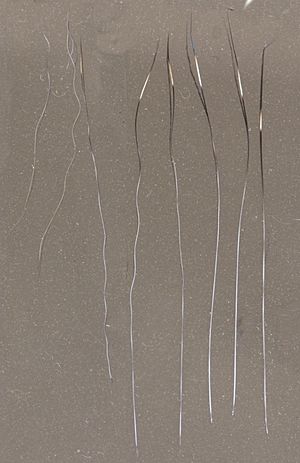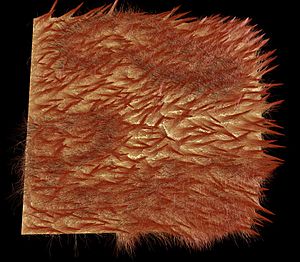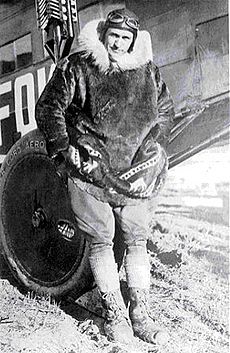Fur facts for kids
Fur is the soft, thick hair that covers the bodies of most mammals. It's made of two main types of hair: a top layer called guard hair and a thick bottom layer called underfur. The guard hair helps keep water from reaching the skin, while the underfur acts like a warm blanket, keeping the animal cozy.
Mammals use their fur for many important things. It helps protect them, gives them a sense of touch, keeps them dry, and even helps them hide. But the most important job of fur is to help animals control their body temperature.
There are different kinds of hair that make up an animal's fur:
- Definitive hair is hair that grows to a certain length and then might be shed.
- Vibrissae are special sensory hairs, like whiskers, that help animals feel their surroundings.
- Pelage is the general term for the whole coat, including guard hairs and underfur.
- Spines are stiff, sharp hairs used for defense, like on a porcupine.
- Bristles are long hairs often used for visual signals, like the mane of a lion.
- Velli (also called "down fur") is soft fur that keeps newborn mammals warm.
- Wool is long, soft, and often curly hair, like on a sheep.
The length of an animal's fur doesn't always show how warm it keeps them. Some animals in warm places, like sloths, have long fur, but it doesn't insulate them as much as the fur of animals in cold places. What really matters for warmth is how dense the fur is. Animals in cold places, like the musk ox, have very thick fur. A musk ox's guard hairs can be 30 centimeters (12 inches) long, and they have a super dense underfur that traps air, helping them survive in temperatures as low as -40°C (-40°F)!
Some desert animals, like camels, use their thick fur to stay cool. Their fur can get as hot as 70°C (158°F) in the summer sun, but their skin stays around 40°C (104°F) because the fur blocks the heat. Aquatic mammals, like otters, trap air in their fur to keep their skin dry and warm in the water.
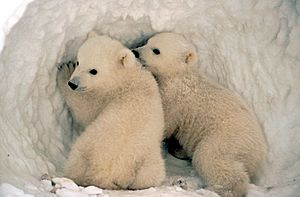
Contents
Why Animals Have Different Fur Colors
The color of a mammal's fur is important for many reasons. It helps them hide, attract mates, communicate with other animals, and even control their body temperature.
Camouflage is a big reason for fur color. It helps animals blend into their surroundings, so they can hide from predators or sneak up on prey. For example, a leopard's spotted coat helps it disappear in the dappled light of the jungle.

Some animals have very bright or bold fur colors to warn others. This is called aposematism. For instance, the black and white fur of a skunk or a honey badger tells other animals to stay away because they can defend themselves (a skunk sprays a bad smell, and a honey badger is very strong and aggressive).
In cold places, like the Arctic, some animals change their fur color with the seasons. The arctic fox, collared lemming, stoat, and snowshoe hare are brown in summer to blend with the land, but they turn white in winter to match the snow.
Sometimes, male and female animals have different fur colors. This can show how healthy they are, which is important when choosing a mate. Some tree-dwelling mammals, like certain monkeys and marsupials, even have blue, green, or violet skin, which helps them in their forest homes. However, the green color of sloths is actually from tiny algae that grow on their fur!
Fur color can also affect how warm an animal is. Darker fur absorbs more heat from the sun, helping animals stay warmer. Smaller mammals, like voles, often have darker fur in winter. The white fur of arctic animals, like the polar bear, doesn't have pigment (color), and it can reflect sunlight onto their skin, helping them absorb heat.
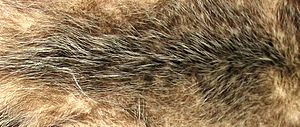
Animals that have fur that is valuable for clothing are called "furbearers" in the fur industry. Using animal fur for clothing or decoration is a topic that many people disagree about. Animal welfare groups believe it's wrong to trap and kill wild animals, or to keep and kill animals on fur farms.
What is Fur Made Of?
Fur usually has two main layers:
- Down hair (also called undercoat or ground hair) is the bottom layer. These hairs are usually wavy or curly and are shorter and more numerous than the top layer. Their main job is to keep the animal warm by trapping a layer of dry air next to the skin and keeping water out. This provides great insulation.
- Guard hair is the top layer. These hairs are longer, usually straighter, and stick out through the down hair. The tips of the guard hairs are what you see on most mammals. This layer often has the most color and shine, including patterns that help with display or camouflage. Guard hairs also help repel water and block sunlight, protecting the undercoat and skin from rain and harmful ultraviolet (UV) rays. Many animals, like domestic cats, can make their guard hairs stand up when they feel scared or threatened.
Many mammals also have awn hairs. These hairs start growing like guard hairs but then change, becoming thin and wavy like down hair for the rest of their length. In many animals, awn hairs make up most of the fur you see. The part of the awn hair closest to the skin helps with warmth, like down hairs, while the outer part helps shed water, like guard hairs. However, because their base is thin, they can't stand up like true guard hairs.
Mammals Without Much Fur
Hair is one of the main features of mammals, but some species or breeds have very little fur. These are often called "naked" or "hairless."
Animals Naturally Without Fur
Some mammals naturally have less fur. Many animals that live in water, like whales, seals, and hippos, have evolved to be mostly hairless. This helps them move more easily through the water. The naked mole-rat is hairless, which might be an adaptation to living underground. Two of the largest mammals alive today, the elephant and the rhinoceros, are also mostly hairless. The hairless bat is mostly hairless too, but it has some short, stiff hairs around its neck, on its front toes, and around its throat. Most hairless animals can't stay in the sun or cold for very long.
Humans are the only primate species that have lost most of their body hair. Scientists think this might be because of a change in a gene about 240,000 years ago.
Even though sheep are mammals, their fur is usually called "wool" instead of fur.
Hairless Animals Created by Humans
Sometimes, a hairless animal is born because of a natural genetic change. When this happens with domesticated animals, humans might breed these hairless individuals together over many generations to create new hairless breeds. There are several breeds of hairless cats, like the famous Sphynx cat. There are also many breeds of hairless dogs. Other examples of hairless animals created by humans include the hairless guinea pig, the nude mouse, and the hairless rat.
Fur in Clothing
When fur is used in clothing, it means the animal's skin (leather) is kept with the hair still on it, because of its look and warmth. For a long time, fur has been used by humans for clothing, even by early humans like Neanderthals.
Fur used in clothes can be dyed bright colors or made to look like exotic animal patterns. It can also be cut short to feel like soft velvet fabric. When people say "a fur," they often mean a fur coat, wrap, or shawl.
Animals often used for fur clothing include foxes, rabbits, mink, beavers, ermine, otters, sable, seals, coyotes, chinchillas, raccoons, and possums.
In the U.S., it became illegal to import and sell seal products in 1972 because people were worried about seal populations. Even though the population of harp seals is now very healthy (around 8 million), the ban is still in place. It's also illegal in the U.S. to import, export, or sell fur from domestic cats and dogs.
Making fur clothing involves taking the animal's skin with the hair still attached. In contrast, making leather means removing the hair from the skin and only using the skin itself. When wool is used, the animal's fleece is cut off while the animal is alive, so the wool can grow back. However, sheepskin shearling is made by keeping the fleece on the leather and then shearing it. Shearling is often used for boots, jackets, and coats.
Fur is also used to make felt. A common type of felt, used in high-quality cowboy hats, is made from beaver fur.
Images for kids
-
Like many mammals, grizzly bears are covered in thick fur.
-
The iconic bearskin hats worn by the Queen's Guard at Buckingham Palace are made from the fur of American black bears.
-
A fur store in Tallinn, Estonia, in 2019.
See also
 In Spanish: Pelaje para niños
In Spanish: Pelaje para niños


